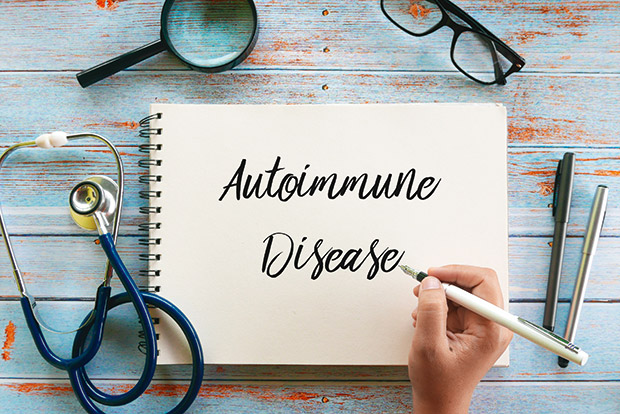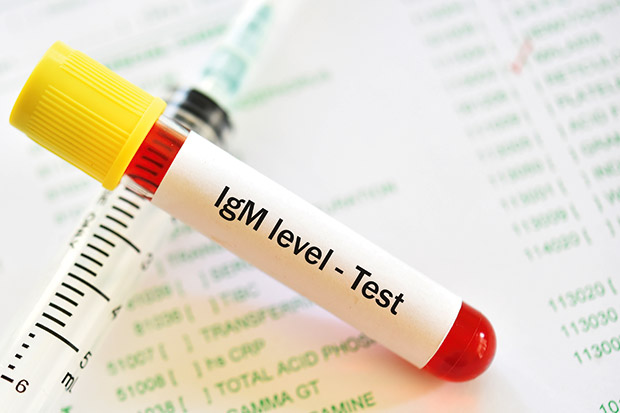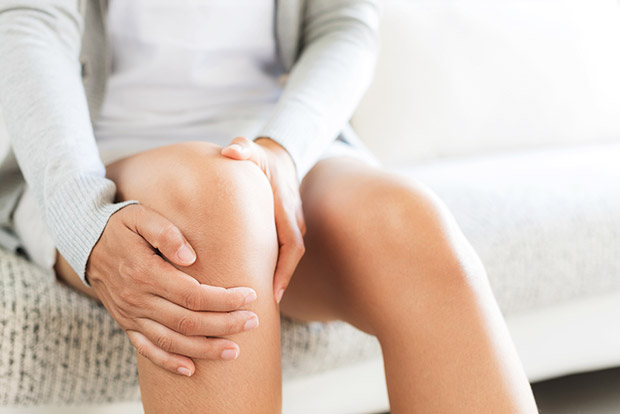Autoimmune disorders: These are the common diseases, symptoms and treatments to know

What causes the body to attack itself? The reasons are as varied as the diseases themselves.
Words: Rosemarie White
The human body is a remarkable feat of design and engineering with the capacity for self-management and repair. Then sometimes, for no discernable reason, it attacks itself.
Most of the time, the body operates much like a well-ordered city. The infrastructure works well, public transport carts goods around, the sanitation department deals efficiently with waste and the defence department sees off foreign invaders. Peace and prosperity flourish, citizens are hale and hearty, and the trains run on time.
Then over-zealous soldiers within the body start to place sinister significance on everyday events, deciding there are shadowy external threats and foreign agents who need to be eradicated. It’s the classic conspiracy theory; innocuous activities are viewed as threats and civil war breaks out with all the needless pain and suffering that civil wars bring.
Welcome to autoimmune disorders.
Autoimmune diseases happen when the body’s defence system can’t differentiate between its own cells and foreign ones, causing it to attack normal cells mistakenly. There are more than 80 types of autoimmune conditions. Most are relatively uncommon but collectively they affect one in 50 New Zealanders. Many strike the relatively young.
It’s only recently that autoimmune diseases have been grouped as a single category, in the same way as cancer or cardiovascular diseases; they are seen as different manifestations of the same underlying problem. A feature is that the female-to-male ratio is heavily skewed to females (10:1 in Hashimoto’s thyroiditis down to 2:1 in autoimmune haemolytic anaemia).

Why are women more vulnerable? There are a variety of theories, but it may begin with the female double X chromosome. Humans inherit two sets of 23 chromosomes – one set of 22 autosomes chromosomes plus an X or Y, the sex chromosomes. It’s possible that having a double XX doubles the risk of autoimmune disease-specific genes.
Pregnancy is another stress test for the female immune system; a woman has to carry a baby without her immune system attacking a technically “half-foreign” body (a foetus has genes and immune components from both parents).
What causes an autoimmune attack?
It’s not known for sure what causes the body’s immune system to turn on itself; because it’s so complicated, it’s hard to pinpoint a single cause. But the culprits include genetic susceptibility, environmental agents, an infection that triggers the immune system to react against specific body tissues, and reactions to chemicals and medications.
WHAT ARE THE SYMPTOMS?

Autoimmune diseases are usually chronic and last a long time, often with periods of remission followed by a flare-up. There are specific symptoms for each disorder and it’s usually a grouping of these that leads to a diagnosis.
Despite the varying types of autoimmune disease, many of them share similar traits:
– Fatigue
– Joint pain and swelling
– Skin problems
– Abdominal pain or digestive issues
– Recurring fever
– Swollen glands
– Inflammation
– Depression
The most common autoimmune diseases are:
• Inflammatory bowel disease, Crohn’s, coeliac disease, pernicious anaemia, serious diseases of the digestive tract.
• Rheumatoid arthritis, a form of arthritis that attacks the joints.
• Psoriasis, a condition marked by thick, scaly patches of skin.
• Psoriatic arthritis, a type of arthritis affecting some people with psoriasis.
• Lupus, a disease that damages areas of the body that include joints, skin and organs.
• Thyroid diseases, including Graves’ disease, where the body makes too much thyroid hormone (hyperthyroidism), and Hashimoto’s thyroiditis, where it doesn’t make enough (hypothyroidism).
• Type 1 diabetes, which is strongly genetic and usually results from autoimmune attacks on the insulin-producing islet cells in the pancreas, leading to insulin deficiency. More than 34 million people worldwide suffer from diabetes mellitus, which usually occurs before the age of 30. The incidence of type 1 diabetes is rising by about four per cent per year, mostly among children. The most alarming increase has been among Finnish children, where rates are expected to increase by 60 per cent in the next 10 years. Most of the cases are in genetically suspectable children, but there also seems to be unidentified environmental causes.
RISK FACTORS
Several theories point to an overactive immune system attacking the body after an infection or injury. It’s also understood that certain risk factors increase the chances of developing autoimmune disorders, including:
Genetics: Disorders such as lupus and multiple sclerosis (MS) tend to run in families.
Weight: Being overweight or obese raises your risk of developing rheumatoid arthritis or psoriatic arthritis. This could be because more weight puts greater stress on the joints or because fat tissue makes substances that encourage inflammation.
Smoking: Research has linked smoking to several autoimmune diseases, including lupus, rheumatoid arthritis, hyperthyroidism and MS.
Gastro-intestinal infections such as salmonella, shigella, yersinia and campylobacter can cause serious, long-term conditions.
PREVENTION AND TREATMENT
Most research is focused on removing the environmental triggers that set off autoimmune disease in genetically susceptible people.
1. Recognize the symptoms. Persistent fever, tiredness, joint pain and swelling will need
medical attention.
2. Obtain the correct diagnosis. There are specific tests that will help accurately diagnose the condition. Blood tests for certain chemicals may indicate an autoimmune disorder (such as anti-nuclear antibody or C-reactive protein). X-rays are often used to detect internal problems and biopsies can be taken of the bowel and urine or stool samples collected for analysis.
3. Seek the right treatment. Treatment is aimed at reducing the immune system activity using anti-inflammatory drugs such as corticosteroids, and immunosuppressive drugs. Sometimes replacement therapy is needed; with type 1 diabetes and hypothyroidism, insulin injections or thyroxin tablets can replace what the damaged pancreas and thyroid glands cannot produce.
4. Make appropriate lifestyle changes. Lifestyles can be adapted to cope with symptoms better. Diet is usually helpful, particularly for Crohn’s disease, where a high-fibre diet low in processed ingredients and supplemented with vitamins is recommended. Omega-3 fatty acids, from cold-water fish, sometimes help with painful joints.

5. Getting enough rest and exercising regularly will help, along with reducing stress and giving up smoking. If joints are affected, physiotherapy can help keep them mobile. People living with lupus may need to stay out of the sun as sensitivity to sunlight can make symptoms worse.
6. Track the disease. Keep your own medical file. Record doctor visits, lab reports, diagnostic tests and medications. Keep a diary of your symptoms since autoimmune diseases are difficult to diagnose — often, symptoms seem unrelated, and an accurate diagnosis can take time.
Love this story? Subscribe now!
 This article first appeared in NZ Life & Leisure Magazine.
This article first appeared in NZ Life & Leisure Magazine.
